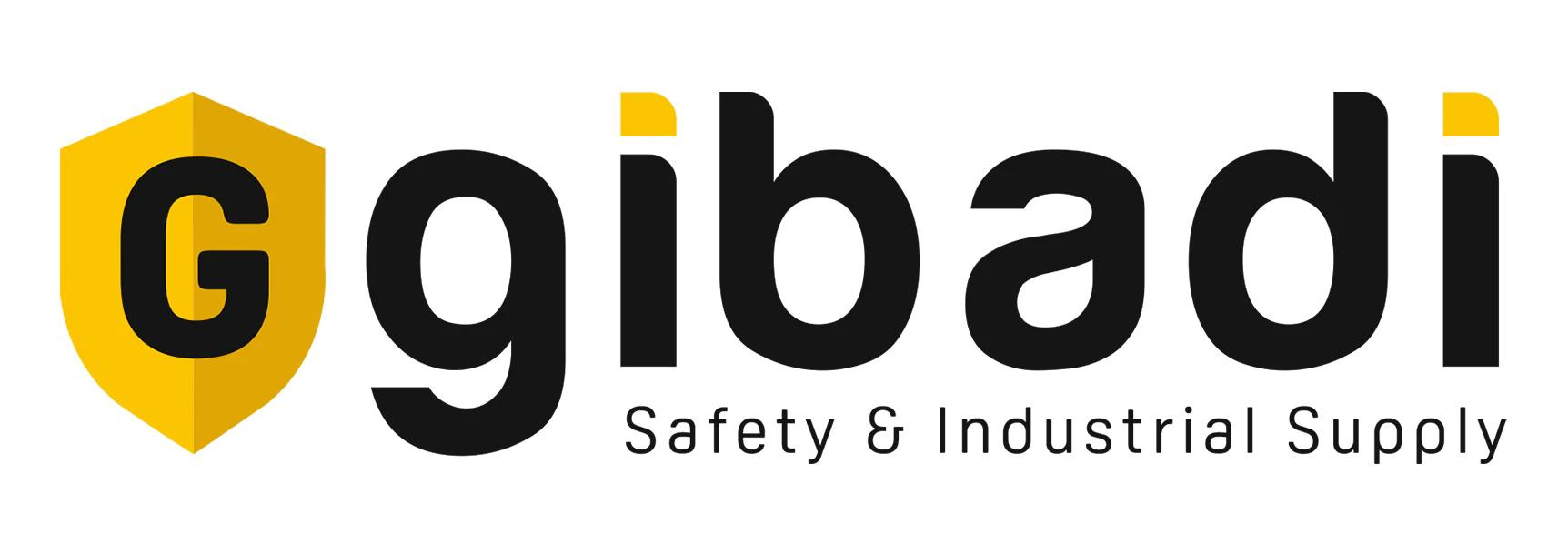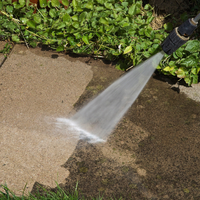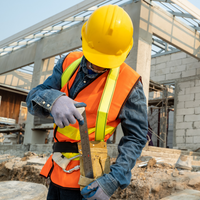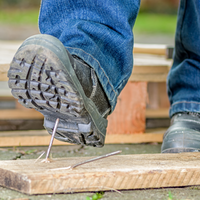Power tools vs Hand tools.
When it comes to shopping for tools, there are two choices available: Power tools vs hand tools. And make no mistake, the age-old debate of “which is the better choice” is still raging on as fervently/weirdly as ever. In fact, with the ever-evolving technologies blurring the lines between them faster than ever before, the choice is becoming even harder – with both helping you to do your tasks more quickly, with less effort & fewer mistakes.
The major difference between hand tools and power tools is that power tools are powered by a battery, electricity, fuel, or compressed air, and can either do things that you cannot do with hand power and elbow grease or can do them much more efficiently and accurately. Hand tools are exactly what they sound like – tools that require manual labor to use.
You cannot say in all ramification that power tools are better than Hand tools and vice versa, but these decisions will depend on the task to be done. Both hand tools and power tools have their advantages and disadvantages. Because of that, it is impossible to tell which are better.
Instead, you will have to look at your own situation and decide whether the cheaper price of hand tools (and their relatively safer operation) justifies the extra physical effort required on the part of the operator and their slower speed, or you would rather choose tool precision, ease of use, high safety risk and expensive price.
When doing simple tasks at home like assembling a piece of furniture or fixing a doorknob, that might be the case. However, if you are planning to do something heavier-duty like build yourself a deck – or if you are planning to do woodworking or similar as a hobby or a profession, you will in most cases need power tools as well.
In fact, you might benefit from having both the manual as well as the power version of the same tool in your kit.
Hand and power tools are a common part of our everyday lives and are present in nearly every industry. These tools help us to easily perform tasks that otherwise would be difficult or impossible. However, these simple tools can be hazardous and have the potential for causing severe injuries when used or maintained improperly. Special attention toward hand and power tool safety is necessary in order to reduce or eliminate these hazards.
Air Tools
- Pneumatic power tools must be secured to the hose in such a way as to prevent accidental disconnection. Safety clips or retainers must be securely installed to prevent attachments from being inadvertently expelled.
- Never exceed the manufacturer’s safe operating pressure for all fittings.
- Hoses exceeding ½ inch inside diameter must have a safety device at the source of supply or branch line to reduce pressure in the event of hose failure.
Hand Tools
- All hand tools, whether furnished by the department or employee owned, must be maintained in safe condition.
- Hand tools must be inspected before each use. Unsafe hand tools must not be used on any campus worksite.
- Hand tools must be used for the designed purpose.
- Impact tools must be free of mushroomed heads.
- Wooden handles must be free of cracks or splinters and be tight to the tool.
- Wrenches must not be used when jaws are sprung to the point that slippage occurs.
- Electric power operated tools must be double-insulated or properly grounded.
- Appropriate personal protective equipment, such as safety glasses with side shields, face shields, leather work gloves, or leather work boots must be worn when using hand tools.
Portable Power Tools and Equipment
Portable power tools are designed for a wide variety of uses. Circular saws, jigsaws, drills, hammer-drills, sanders, grinders, routers and numerous other power tools, save time and effort on the job. The increased use of power tools heightens the need for awareness of the hazards they present if not operated properly. While each type of tool has its own unique hazards which must be taken into account, the following safety rules are common to all power tools.
- Do not operate power tools or equipment unless you have been authorized to do so.
- Inspect tools daily to ensure that they are in proper working order. Do not use damaged or defective tools.
- Use tools for their intended purpose and in the manner intended.
- All power tools and electrical devices must be properly grounded.
- Keep guards and protective devices in place at all times. Never use equipment or tools from which guards have been removed.
- Do not use electric power tools and equipment when standing in water.
- Only qualified persons are to repair electric tools or equipment.
- All extension cords must be the 3-pronged type and made for hard use. (Designation types S, ST, STO, SJ, SJO, SJT, and SJTO.)
Powder-Actuated Tools
- No employee may operate any powder-actuated tool unless properly trained in all manufacturers’ instructions and authorized by their shop supervisor, manager, or foreman.
- Powder-actuated tools must not be left loaded and unattended.
- Used shots must be disposed of properly.
- Follow all manufacturers’ instructions, which must be located with the tool at all times.
The Difference between Hand tools and Power tools
What’s the difference between hand tools and power tools?
Hand tools are exactly what they sound like – tools that require manual labor to use. Power tools have a power source that allows them to operate automatically and without human intervention.
That power source may be a battery, air compressor or electricity.
Power tools also have motors and other mechanisms that allow them to run more efficiently and more powerfully than their manual counterparts.
Manual tools have fewer moving parts, and their designs are simple in nature.
To recap: power tools use a source of power (i.e. battery or electricity) to run, while hand tools rely on human power to operate.
Other difference include: Speed, Precision, consistency, energy sources, safety, cost etc.
- Precision:
In terms of precision, there are two things to keep in mind. While power tool will be more precise in terms of getting the same task done right repeatedly, hand tools are oftentimes more precise in their level of control. That is to say, if you want to drill the exact same hole into a piece of material over and over again, you will do best by using a drill press. However, if you need to drill a very small hole into a fragile piece of material, you might be better off using a manual hand drill.
- Speed
Power tools are much faster than hand tools in two ways. First, there is the benefit of being able to perform a single task faster. For example, it is much faster to cut a board with a circular saw than with a handsaw. Secondly, there is the benefit of virtually unlimited energy available at your disposal. Unlike muscles, power tools do not need nearly as much “relaxation time” allowing you to work with fewer breaks and to finish your work in fewer days. Power tools get the work done with less exertion of strength when compared to hand tools.
- Length of Operation
The fact that while one can operate power tools for prolonged periods of time, doing the same work manually with hand tools for as long can be relatively tasking.
4.Energy Source
The obvious difference between hand and power tools is where they get the energy to perform the task at hand. While in the case of a hand tool, all of the energy comes from the tool operator, in the case of power tools, the vast majority of it comes from an external power source. That power source could either be an air compressor, a power outlet, a battery, or gas. Even with most power tools, the operator still needs to use a considerable amount of energy to either move the tool around, press it against the workpiece, or to move the workpieces around (in the case of a router table, for example).
- Safety
Hand tools are relatively safer than power tools – mainly because of their lack of power and automation. However, you can still get injured using both types of tools. But power tool injuries are severe when compared to hand tools.
As such, make sure you have the necessary safety gear and take the necessary safety precautions before using a tool regardless of whether it’s an electric one, a manual one, or a gas-powered one.
- Consistency
While there are craftsmen that are extremely consistent even when using hand tools, properly set-up machinery is usually a winner in this aspect. Take the task of cutting a board in half, for example. If an amateur cut it with a handsaw, chances are the cut will be slightly off (and in a different way) each time. Teaching that same amateur to use a circular saw safely, he will be able to get a much more consistent cut over multiple board.
- Cost
Power tools are expensive compared to their hand tool counterpart. Owing to their cost of production. You can purchase both tools at Gibadi.com limited
THE BENEFITS OF HAND TOOLS
One of the primary benefits to owning hand tools is that there’s no need to worry about mechanical or computerized parts breaking. Hand tools have few moving parts, so they tend to last longer than their powered counterparts.
Hand tools also give users more control over the tool’s movement, which is ideal for wood carving and tasks that require finely detailed work.
Because hand tools require human power to run, they are always available for use. There is no need to worry about recharging batteries and power outages. These tools can be used any time.
With most manual tools being lighter in weight and more compact in size, they are also travel-friendly.
THE BENEFITS OF POWER TOOLS
The main benefit to using power tools is their power. Equipped with motors, these tools use a power source, like a battery or electricity, to run. They are far more powerful than manual tools, which contributes to many of the other benefits these tools offer.
Greater power also means greater accuracy and time saved on projects. Power tools are usually more precise because they move quickly, and some have guides to make cutting more precise. More power also means that jobs get done far more quickly than they would with a manual tool.
Some power tools also handle tasks that are nearly impossible with manual tools. The jackhammer is a great example of this. Try driving nails or screws into concrete with a simple hammer. The powerful jackhammer can take care of this task with ease, which allows contractors to secure concrete anchors into walls to secure them to concrete floors.
In many cases, power tools (while dangerous themselves) are safer than manual tools. Cutting down a large tree with a manual saw takes longer and is far more dangerous than using a chainsaw.
Visit Gibadi.com limited for your power tools and hand tools














